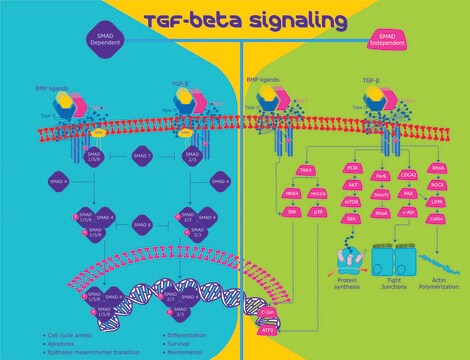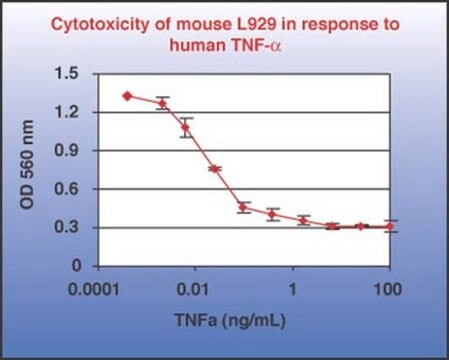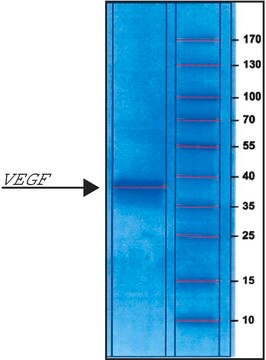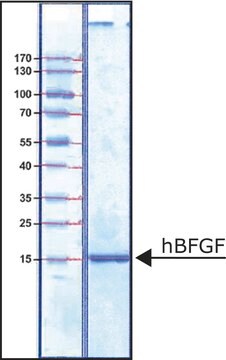T7924
Transforming Growth Factor-α human
≥98% (SDS-PAGE and HPLC), recombinant, expressed in E. coli, powder, suitable for cell culture
Synonym(s):
hTGF-α, TGF-α
About This Item
Recommended Products
Product Name
Transforming Growth Factor-α human, TGF-α, recombinant, expressed in E. coli, powder, suitable for cell culture
biological source
human
Quality Level
recombinant
expressed in E. coli
Assay
≥98% (SDS-PAGE and HPLC)
form
powder
potency
≤0.2 ng/mL ED50
quality
endotoxin tested
mol wt
5.5 kDa
packaging
pkg of 1 mg
pkg of 5 mg
storage condition
avoid repeated freeze/thaw cycles
technique(s)
cell culture | mammalian: suitable
impurities
≤1 EU/μg
UniProt accession no.
storage temp.
−20°C
Gene Information
human ... TGFA(7039)
Looking for similar products? Visit Product Comparison Guide
Amino Acid Sequence
General description
Application
- to determine the ideal concentration of growth factors to be used in the culture medium that supports sheep preantral follicles
- in human hepatocytes cell culture and keratinocyte cell culture
- to induce morphogenesis in primary mouse organoids
Biochem/physiol Actions
Physical form
Analysis Note
Storage Class Code
11 - Combustible Solids
WGK
WGK 3
Flash Point(F)
Not applicable
Flash Point(C)
Not applicable
Personal Protective Equipment
Choose from one of the most recent versions:
Already Own This Product?
Find documentation for the products that you have recently purchased in the Document Library.
Customers Also Viewed
Our team of scientists has experience in all areas of research including Life Science, Material Science, Chemical Synthesis, Chromatography, Analytical and many others.
Contact Technical Service









